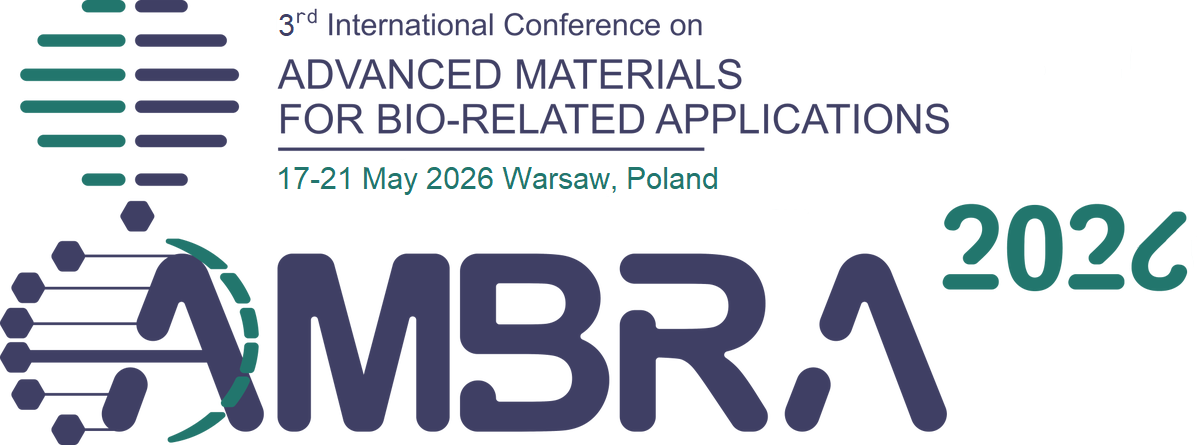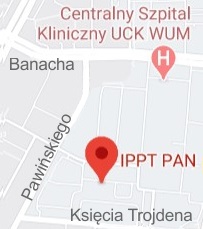| 1. |
Manjakkal L.♦, Kumar C.♦, Beg M.♦, Mathew A.♦, Saju J.♦, Febin P.♦, Rani Markapudi P.♦, Electrochemical capacitors with lithium chloride/polyvinyl alcohol solid polymer electrolyte for ionotronic-based thermal sensors,
Electrochimica Acta, ISSN: 0013-4686, Vol.536, No.146740, pp.1-7, 2025 Streszczenie:
This paper describes an ionotronic-based sensor that can detect changes in temperature using a solid polymer electrolyte (SPE)-based transparent electrochemical capacitor (EC). The EC developed using flexible ITO as an active electrode and polyvinyl alcohol (PVA)- lithium chloride (LiCl) gel composite-based SPE. The electrochemical performances of the sensors are investigated using cyclic voltammetry (CV), electrochemical impedance spectroscopy (EIS), and galvanostatic charging and discharging (GCD) analysis. The EC was fabricated using a freestanding SPE, which exhibits a specific capacitance of 4.19 μF. cm-² at a scan rate of 5 mV. s-1. The direct coating of the SPE on the electrode enhances the specific capacitance and is found to be 18.70 μF.cm-², which is 12 times higher than the EC fabricated using freestanding SPE. When a temperature was applied to the top of the EC with directly coated SPE, we observed a variation in the device’s capacitance due to the change in the mobility of ions of the SPE, which is directly related to the temperature change. The EC exhibits a sensitivity of 0.30 µF/ °C (R2= 0.9694) for the temperature range of -10 to 50 °C. Due to its ionic reaction, the EC demonstrates a high capacitance value in the range of µF in the low frequency range, which shows its potential application in ionotronic-based sensing and as an energy storage for the next generation of wearable devices. Słowa kluczowe:
Ionotronic sensor, Temperature monitoring, Transparent electronics, Electrochemical capacitor Afiliacje autorów:
| Manjakkal L. | - | inna afiliacja | | Kumar C. | - | inna afiliacja | | Beg M. | - | inna afiliacja | | Mathew A. | - | inna afiliacja | | Saju J. | - | inna afiliacja | | Febin P. | - | inna afiliacja | | Rani Markapudi P. | - | inna afiliacja |
|  | 100p. |
| 2. |
Kumar C., Sebastian A.♦, Markapudi P.♦, Beguerisse Díaz M.♦, Sundaram S.♦, Hussain A.♦, Manjakkal L.♦, Opto-electrochemical variation with gel polymer electrolytes in transparent electrochemical capacitors for ionotronics,
APPLIED PHYSICS LETTERS, ISSN: 0003-6951, DOI: 10.1063/5.0190801, Vol.124, No.11, pp.111603-1-111603-7, 2024 Streszczenie:
Advanced flexible ionotronic devices have found excellent applications in the next generation of electronic skin (e-skin) development for smart wearables, robotics, and prosthesis. In this work, we developed transparent ionotronic-based flexible electrochemical capacitors using gel electrolytes and indium tin oxide (ITO) based transparent flexible electrodes. Different gel electrolytes were prepared using various salts, including NaCl, KCl, and LiCl in a 1:1 ratio with a polyvinyl alcohol (PVA) solution and compared its electrochemical performances. The interaction between gel electrolytes and ITO electrodes was investigated through the development of transparent electrochemical capacitors (TEC). The stable and consistent supply of ions was provided by the gel, which is essential for the charge storage and discharge within the TEC. The total charge contribution of the developed TECs is found from the diffusion-controlled mechanism and is measured to be 4.59 mC cm−2 for a LiCl/PVA-based gel. The prepared TEC with LiCl/PVA gel electrolyte exhibited a specific capacitance of 6.61 mF cm−2 at 10 μA cm−2. The prepared electrolyte shows a transparency of 99% at 550 nm and the fabricated TEC using LiCl/PVA gel exhibited a direct bandgap of 5.34 eV. The primary benefits of such ionotronic-based TEC development point to its potential future applications in the manufacturing of transparent batteries, electrochromic energy storage devices, ionotronic-based sensors, and photoelectrochemical energy storage devices. Afiliacje autorów:
| Kumar C. | - | IPPT PAN | | Sebastian A. | - | inna afiliacja | | Markapudi P. | - | inna afiliacja | | Beguerisse Díaz M. | - | inna afiliacja | | Sundaram S. | - | inna afiliacja | | Hussain A. | - | inna afiliacja | | Manjakkal L. | - | inna afiliacja |
|  | 100p. |
| 3. |
Manjakkal L.♦, Jain A., Nandy S.♦, Goswami S.♦, Carvalho J.♦, Pereira L.♦, See C.♦, Pillai S.♦, Hogg R.♦, Sustainable electrochemical energy storage devices using natural bast fibres,
Chemical Engineering Journal, ISSN: 1385-8947, DOI: 10.1016/j.cej.2023.142845, Vol.465, No.142845, pp.1-16, 2023 Streszczenie:
Naturally abundant materials play a crucial role in the development of sustainable electrochemical energy storage (EES) devices including batteries and supercapacitors (SCs). This is due to limited available resources with regards to energy storage materials, and the environmental pollution produced by the toxic materials utilized in conventional EESs. In the current review, development in the field of natural bast fibres (jute, flax, hemp and kenaf) based EES devices performances is highlighted. This review emphasizes methods such as the direct use of modified fibres and activated carbon from biomass for the design of EES devices. Activated fibres were developed using both physical and chemical activation methods. Key challenges including active electrode materials preparation, capacitive retention, and the implementation of the fibre based EES devices are critically discussed. Furthermore, the recent surge in the use of wearables and portable technologies that demand further development of flexible/non-flexible EES devices are also explored. Future trends and perspectives on materials development, power management interface, recycling, biodegradability and circular economy are also addressed. It is concluded that the development of new renewable energy systems using bast fibres has many remarkable advances in device performance. For this, an innovative approach is required to develop high energy density bast fibre based sustainable EES devices which will be potentially implemented for clean energy solutions. Słowa kluczowe:
Biomass derived carbon, Electrochemical energy storage, Supercapacitor, Modified fibres, Natural fibres Afiliacje autorów:
| Manjakkal L. | - | inna afiliacja | | Jain A. | - | IPPT PAN | | Nandy S. | - | inna afiliacja | | Goswami S. | - | inna afiliacja | | Carvalho J. | - | inna afiliacja | | Pereira L. | - | inna afiliacja | | See C. | - | inna afiliacja | | Pillai S. | - | inna afiliacja | | Hogg R. | - | inna afiliacja |
|  | 200p. |
| 4. |
Peringath Anjana R.♦, Haghighat Bayan M.A., Beg M.♦, Jain A., Pierini F., Gadegaard N.♦, Hogg R.♦, Manjakkal L.♦, Chemical synthesis of polyaniline and polythiophene electrodes with excellent performance in supercapacitors,
Journal of Energy Storage, ISSN: 2352-152X, DOI: 10.1016/j.est.2023.108811, Vol.73, No.Part A, pp.108811-1-9, 2023 Streszczenie:
The emergence of portable electronics in miniaturized and intelligent devices demands high-performance supercapacitors (SC) and batteries as power sources. For the fabrication of such energy storage devices, conducting polymers (CPs) have significant advantages due to their high theoretical capacitive performance and conductivity. In this work, we developed two CPs including polyaniline and polythiophene through a low-cost chemically synthesized approach and the film-by-spin coating method. The structural and morphological properties of the CPs are analyzed using Fourier-transform infrared spectroscopy (FTIR), contact angle measurement, and scanning electron microscopy (SEM). Based on these CPs, novel pristine polyaniline and polythiophene-based SCs (PASC and PTSC) are developed. The prepared CPs contribute to high electrochemical performances due to their high conductive nature of the electrode and conjugated polymer materials reaction. Hence both electrochemical double-layer formation and pseudocapacitance contributed to the energy-storing performances of the device. Electrochemical impedance spectroscopic analysis (0.1 Hz to 100 kHz) demonstrates faster ionic exchange and high capacitance of the PASC electrode as compared to PTSC in H3PO4 electrolyte. The PASC devices exhibit specific capacitance of 13.22 mF·cm−2 with energy and power densities of 1.175 μW·h·cm−2 and 4.99 μW·cm−2 at a current of 50 μA. Compared to PTSC (specific capacitance 3.30 mF·cm−2) the PASC shows four times higher specific capacitance due to its improved surface, structural and electrical properties. The electrochemical performance reveals the superior SC performance for this type of CP electrode. Słowa kluczowe:
Conductive polymers, Spin coating, Polyaniline, Polythiophene, Supercapacitor, Electrochemical performances Afiliacje autorów:
| Peringath Anjana R. | - | inna afiliacja | | Haghighat Bayan M.A. | - | IPPT PAN | | Beg M. | - | inna afiliacja | | Jain A. | - | IPPT PAN | | Pierini F. | - | IPPT PAN | | Gadegaard N. | - | inna afiliacja | | Hogg R. | - | inna afiliacja | | Manjakkal L. | - | inna afiliacja |
|  | 100p. |




















